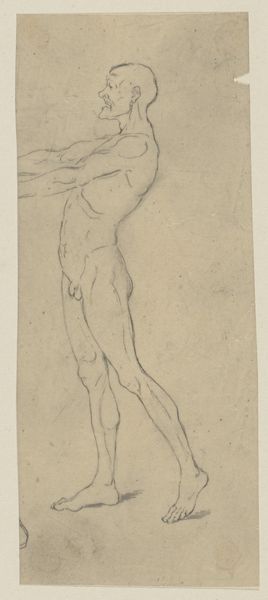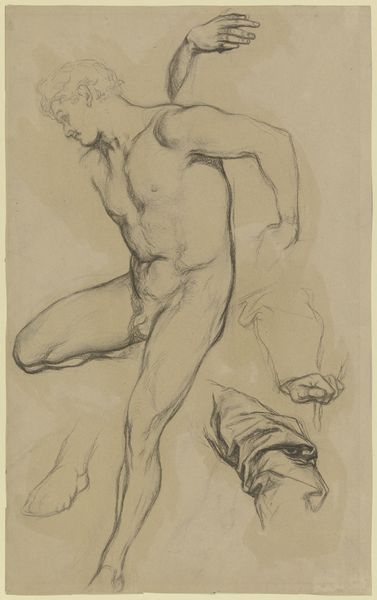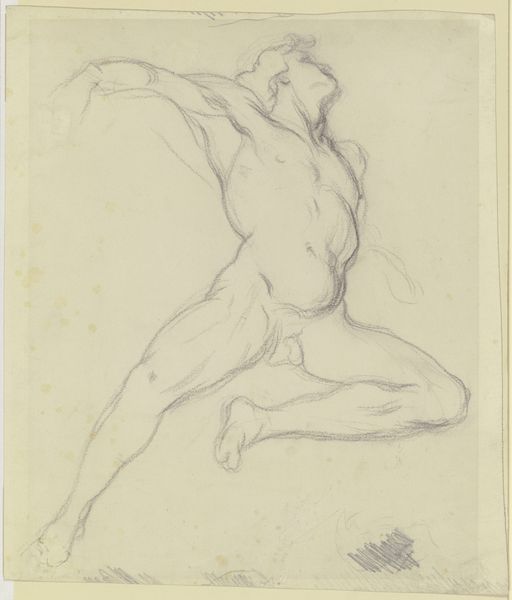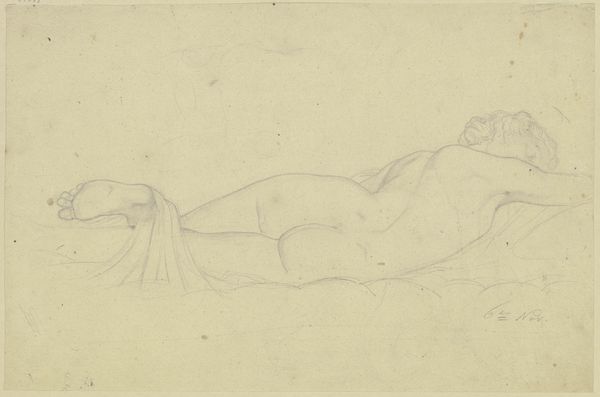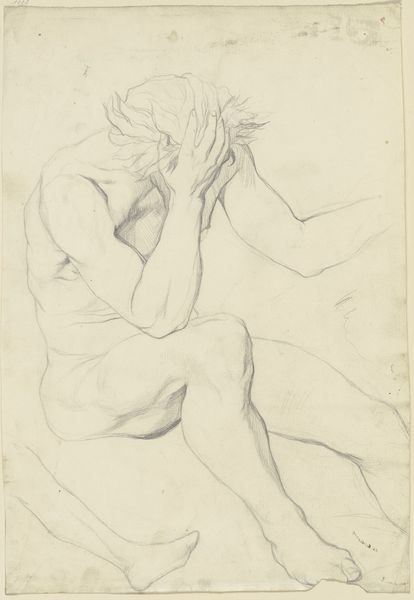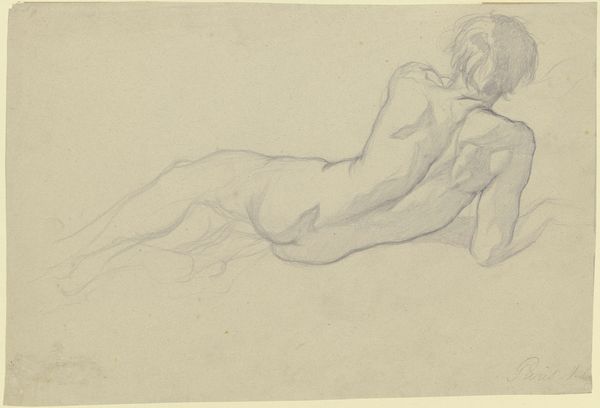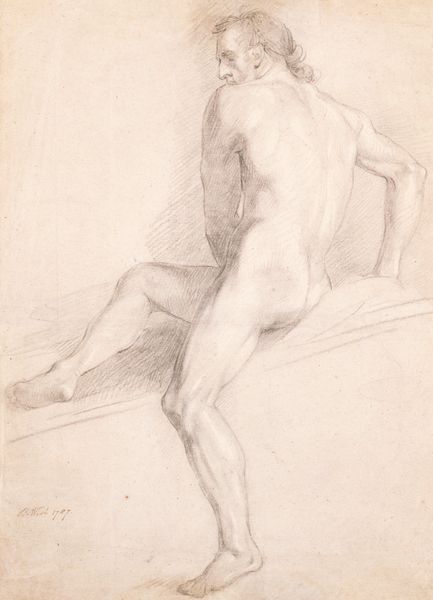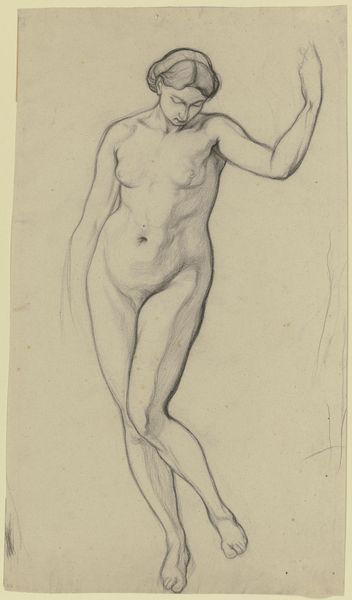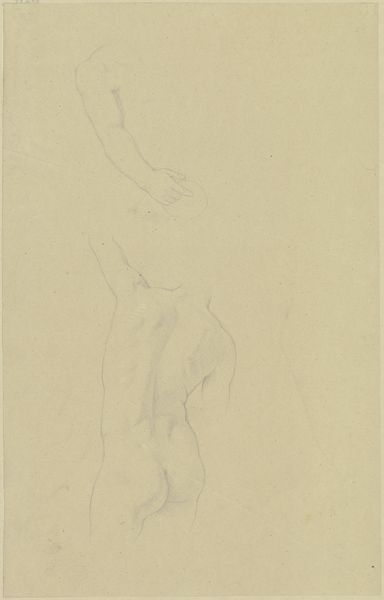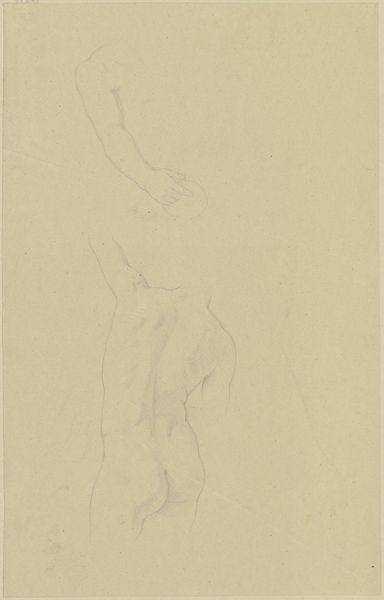
drawing, print, pencil
#
pencil drawn
#
drawing
#
baroque
# print
#
pencil sketch
#
pencil drawing
#
pencil
#
academic-art
#
nude
#
male-nude
Dimensions: Sheet: 14 9/16 × 10 1/16 in. (37 × 25.5 cm)
Copyright: Public Domain
Curator: Here we have Giacomo Zoboli’s "Academy Sketch of a Seated Male Figure," estimated to have been created sometime between 1700 and 1767. Editor: My first thought is the vulnerable physicality captured by a delicate hand, perhaps demonstrating how the classical male form can be interpreted. The lack of background emphasizes the starkness of the form itself. Curator: Absolutely. We can view this piece through the lens of academic artistic practice. It reveals not just a study of form, but speaks volumes about the artistic training in that era. I see a deep interrogation of masculinity embedded within the drawing’s history. Editor: From a material perspective, the sketch's ephemeral quality—created with what appears to be humble pencil on paper—belies the intensive labor involved in mastering the anatomical precision demonstrated here. Think about the embodied labor that goes into training the hand and eye. Curator: And we should also consider the social power dynamics. Who had the privilege to train and to pose? What structures were maintained by enforcing those traditional cannons of idealized masculine form? The history of exploitation through art is one that echoes. Editor: Precisely, it makes me wonder about the source of the materials, and if that had an impact on the sketch itself. There must be a throughline on how that may effect accessibility for Zoboli's contemperaries and in their own social mobility. Curator: Viewing this sketch critically prompts questions about artistic production, labor, the male gaze, and power imbalances inherent in these classical representations. It reveals intersections of social issues that transcend this sketch itself. Editor: Reflecting on it now, I am struck how a simple piece like this, rendered with humble materials, allows us to explore such weighty questions regarding art's social history. Curator: Agreed, examining the artistic process in the context of Zoboli's work helps connect artistic production and history to our lived experience.
Comments
No comments
Be the first to comment and join the conversation on the ultimate creative platform.
